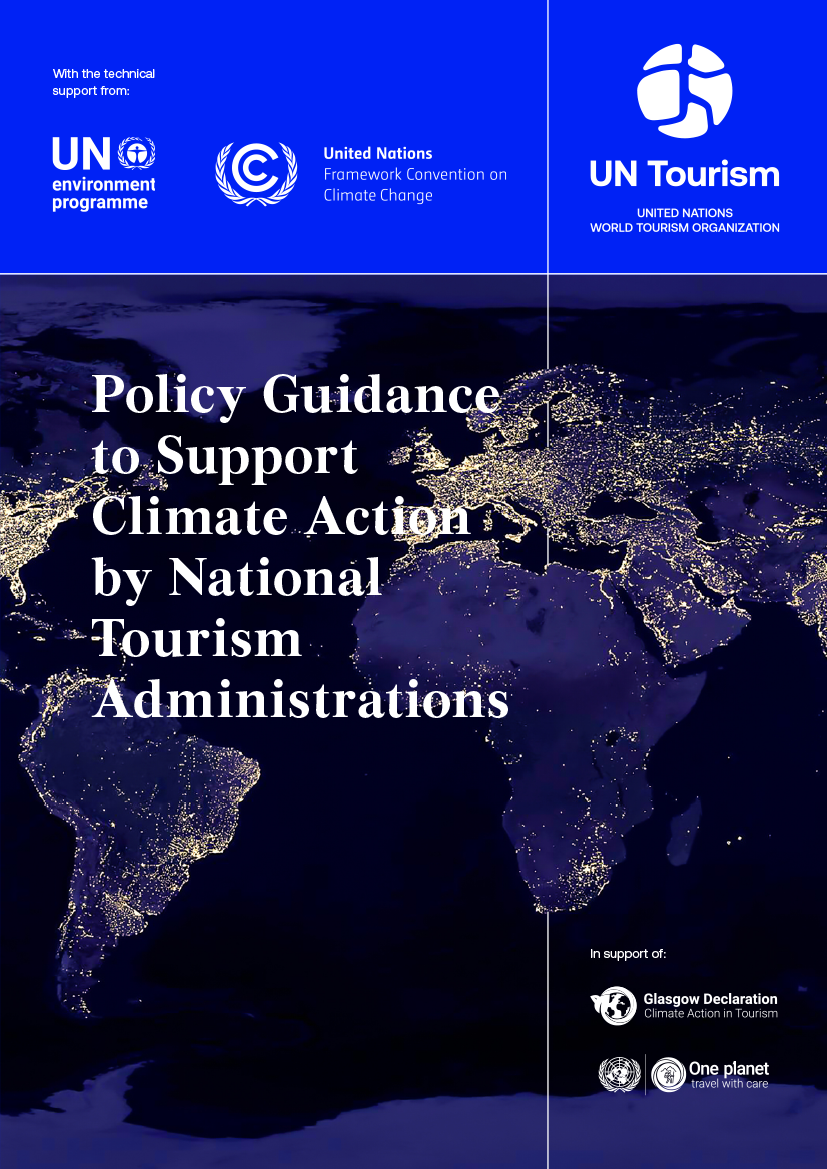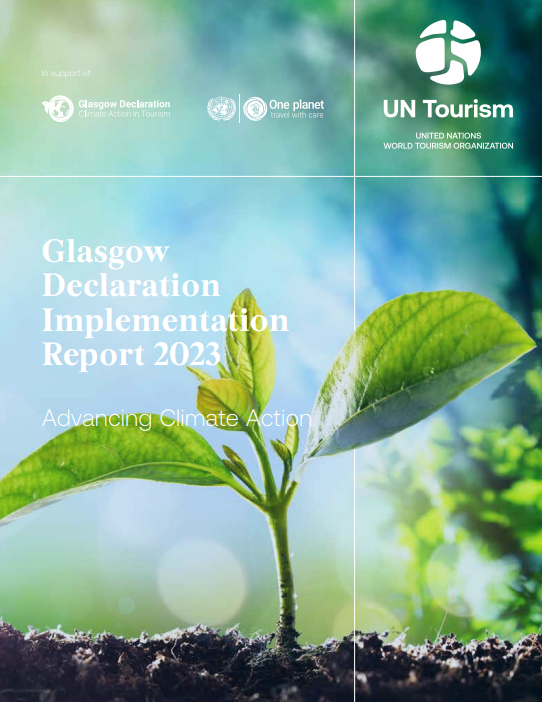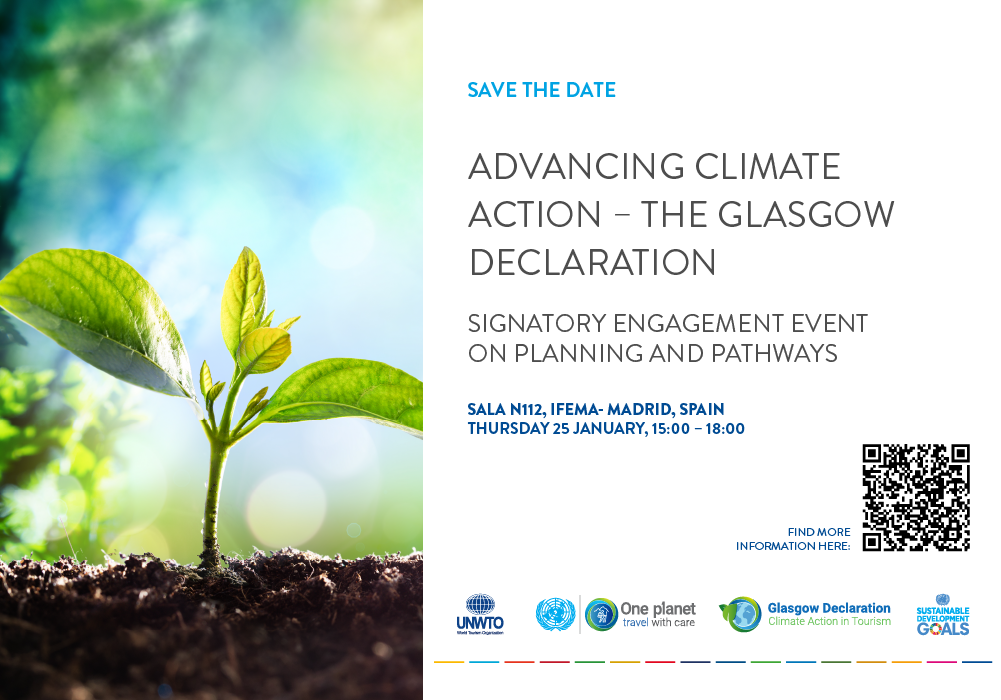CASE STUDY FROM WILDERNESS GROUP: TRANSLATING MEASUREMENT INTO ACTION
It was only once the adventure tour operator had measured the impacts of its supply chain, explains its Founder Paul Easto, that it was able to understand its real challenges (and opportunities).
You can watch the conversation here.
The case study has been provided by Wilderness Group in support of Climate Action in the Tourism Sector – An overview of methodologies and tools to measure greenhouse gas emissions demonstrating the value of taking action to measure emissions and accelerate climate action.
Right from its launch as a business in 2001-2002, the UK-based adventure tour operator Wilderness Scotland had always considered its impact on the climate, although in the beginning this was more part of an interest in sustainability in general than a particular focus on its carbon footprint. As the years have progressed, however, its focus has become ever more precise. When the company built its new HQ in Scotland in 2018, it aimed to create as energy efficient a building as possible.
Ever since then, there has been an increasing awareness that unless the Wilderness Group was in a position to accurately and scientifically measure its carbon footprint, it would find it very hard to devise a strategy based on any meaningful targets. “Our transition over the last decade has been about moving from ideologically driven action where we believed we wanted to do the right thing,” explains Founder Paul Easto, “to actually doing something that's more grounded in science.”
Turning crisis into opportunity
During the depths of the pandemic, therefore, the company used the enforced pause to focus on addressing its climate impact and to transform the crisis into something positive. This entailed working with the UK-based climate consultancy Ecollective, since it was clear that measuring the company’s complete footprint would require dedicated resource to make that happen.
“We're just trying to make sense of it for the consumer”
Although the Wilderness Group had tried to do this in the past, and had measured certain aspects of the organisation’s carbon footprint using publicly available calculators, they hadn’t been able to address the full impact of the supply chain. Working with the Ecollective enabled them to look at every single aspect of the tourism experience from the accommodation, the food and, the transportation right through to the guides and activities, and discover where the real impacts were to be found. For example, explains Easto, the company was very proud of the net zero HQ it had built in 2018, but it was only once they had measured the full impacts of their supply chain that they realised the building investment had delivered savings of just 4% of the organisation’s total carbon footprint.
Having therefore worked out the footprints of all the component parts of its operations and each itinerary, they chose to bring these together and express them as a measurement of CO2 equivalent per guest on a per trip basis. They now communicate this in each of their trips’ carbon labelling and climate comms, making them one of the first tour companies in the world to do so. “We're just trying to make sense of it for the consumer,” explains Easto, “but until this is widespread currency, we’re fighting a pretty tough battle.” He reckons the key is to make this kind of data widespread across the tourism industry, so that a potential customer at the point of purchase can not only see data on price, but also see the carbon impact, enabling them to make more informed choice. And while he knows there’s a long way to go, he cites the example of nutrition labelling on food as something that was once rare and is now absolutely commonplace.
A key part of the solution to help accelerate this shift from individual companies to mass uptake, says Easto, would be the creation of a common methodology for tour operators to measure the impacts of their supply chains. He says he has spoken with many tour operators around the world that are also grappling with this challenge, and what is clear is that even in the absence of a shared and agreed methodology, they're generally using the same kind of inputs and the same sort of emission factor calculations. What’s lacking is full consensus on what should and shouldn't be included, such as food or transport to and from the trip itself.
Ambition into action
With the first step of understanding the scale of its emissions in place, Wilderness is now working on its 10 year decarbonisation strategy. By the end of 2022 the company had completed a year of this plan, which aims for a 90% reduction of emissions over a 10 year period. “It’s super aggressive, a bit overly wildly ambitious,” explains Easto, “but my rationale was that even if we don't achieve the 90% but achieve over 50%, we will have met the global 2030 Target.”
Now that he understands his supply chain better, Easto considers that around half of those emissions savings can realistically be delivered over the next decade. In transport, for example, which represents 20% of their footprint, they are already introducing electric vehicles into their fleet.
Likewise, in food, they are working to reduce the amount of meat consumption within their itineraries through introducing initiatives such as vegetarian nights that don't impact the totality of the customer experience, but make a significant impact across the amount of meat consumed.
Where the real challenge lies, is that many of the other the necessary reductions rely upon developments beyond the company’s own control, especially in accommodation.
Therefore, while they continue their work on decarbonizing the business, there is also considerable work on regeneration, the cornerstone of which is their Conservation Contribution Scheme, which from 2023 will be rebranded as Wilderness Conservation and Communities Fund, to highlight the importance of the community work the company is undertaking.
Currently they are working with two key partners, the John Muir Trust and Trees for Life, on various projects focused on reforesting and rewilding the Scottish countryside their trips visit. Support takes many forms. First, an opt out contribution of 12 pounds is added to each booking. The company also provides the charities with 1000 hours of office time volunteer support, which translates as two office days per annum for each member of the team to go out into the field and work on these projects. And they ensure that wherever possible they integrate the projects into their experiences so guests can see firsthand the contributions that Wilderness is making, as well as learn more about the project work itself.
Finally, the company compensates for all its residual emissions, while working towards a long term goal of all such compensation being invested in carbon removal. Currently it is about 90% mitigation and 10% removal, but each year the balance will shift towards being 100% removal by 2030.
Despite the ambition they have set themselves, Easto urges anyone starting out to not fixate on the end goal, but rather to simply get started with whatever resources are at your disposal, and to aim to learn as much as possible. “The more you can understand and know about this topic,” he explains “the easier it is to kind of get your head around what actually needs to be measured and what needs to be done.”
External source(s)



